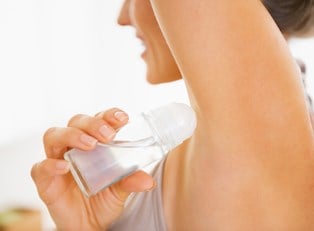Antiperspirants have made embarrassing underarm sweating a thing of the past. While deodorant can leave you smelling fresh and clean, only antiperspirant can ensure that you don’t have to deal with excessive sweating. Here is a look at how this product keeps you feeling dry and confident.
The Mechanism
As an antiperspirant is applied to the underarm, it begins to dissolve as it comes into contact with sweat or other moisture. During this process, the two substances combine to form a gel that begins to sweep into the sweat glands, which temporary plugs them and prevents them from secreting sweat. Depending on the specific product used, this plugging effect can last for hours, but it’s easily reversed by bathing.
The Ingredients
Specific aluminum compounds have been proven to be incredibly effective at stopping the flow of sweat underneath the arms and are therefore almost universally used in antiperspirant deodorants. However, the specific kind of aluminum will vary by product. For example, most spray- and roll-on antiperspirants commonly use aluminum chlorohydrate, while most gel-based deodorants will use aluminum zirconium. However, the latter poses problems because of its potential for staining clothing. Alcohol is also another common ingredient in antiperspirants, since it dries quickly and makes for a good medium to transfer the sweat gland-plugging aluminum onto the skin.
Controversy
Some people have claimed that the plugging action of antiperspirants causes toxins to accumulate underneath the arms, which can then lead to breast cancer. Additionally, others have raised concerns about the possibility of aluminum being absorbed into the body and causing cancer as well. There are currently no accepted scientific studies to support this idea—rates of cancer are generally about the same between those who use antiperspirant and those who don’t.



